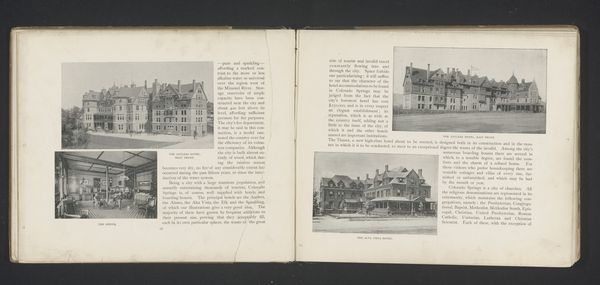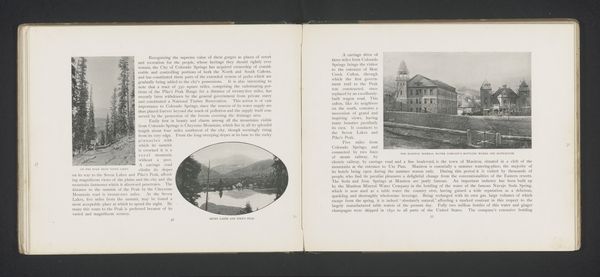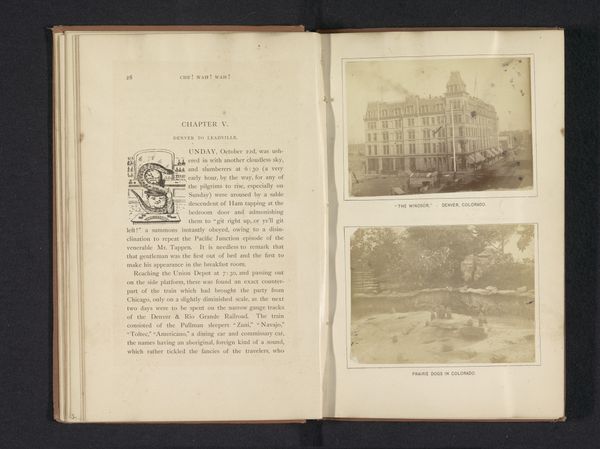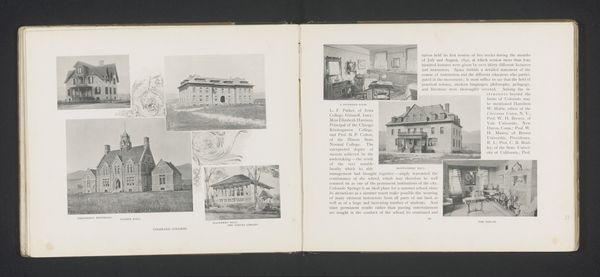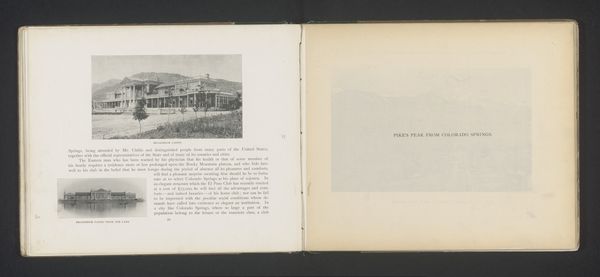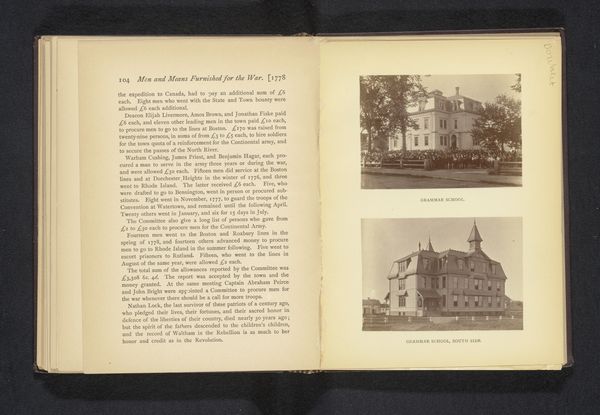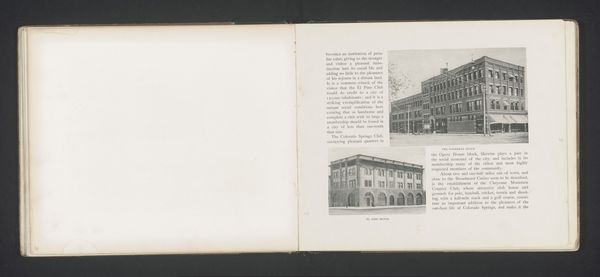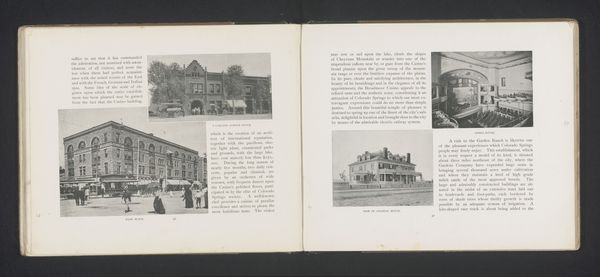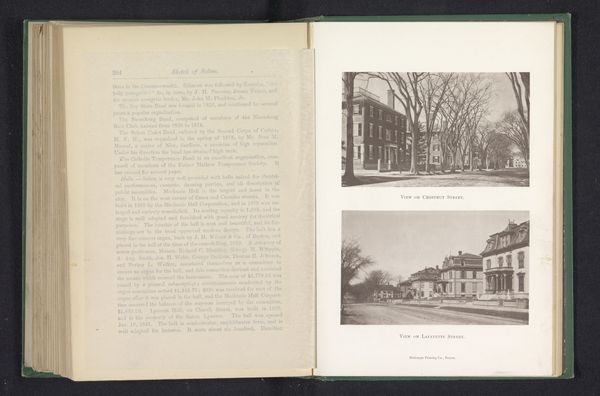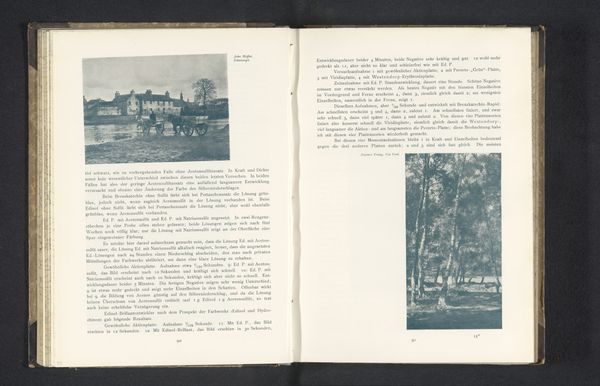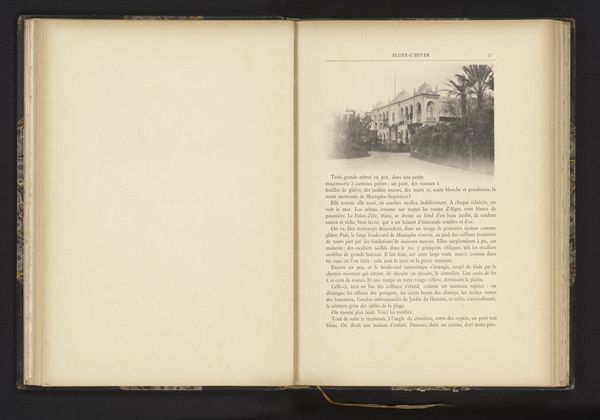
print, photography, photomontage, architecture
# print
#
landscape
#
photography
#
photomontage
#
academic-art
#
architecture
#
building
Dimensions: height 175 mm, width 217 mm
Copyright: Rijks Museum: Open Domain
Curator: Here we have an interesting example of early photographic manipulation: an anonymous photomontage of three buildings in Colorado, dating to before 1893. What catches your eye first? Editor: It's the stark contrast between the crisp architectural details and the slightly blurry, almost dreamlike quality of the overall image. The juxtaposition of these distinct building styles creates a sense of disconnect, doesn't it? Curator: Indeed. It’s crucial to note the context. Such composite images were quite popular at the time. They catered to civic pride, showcasing burgeoning urban centers. This work highlights Colorado's ambition to establish institutions that could mirror older, established cities. Editor: Looking closer, the buildings themselves are so different in form and function. I'm drawn to how each building is placed almost starkly into the landscape. Each structure has distinct massing and form. It feels very intentional to show their geometry and texture through the contrasts in black and white. Curator: Precisely. This work should be considered against the backdrop of late 19th century America's rapid urban expansion and the promotional activities that accompanied it. Photomontages of this type presented a carefully curated image of progress and civilization in the West, glossing over realities like economic disparity and displacement. Editor: So it's not just a pretty picture, but a form of early advertising for an emerging city? Curator: Essentially, yes. Consider the choices involved: the angle of each building, the arrangement on the page, the very decision to combine them. Each element works towards a specific representation of Colorado as a modern, cultured, and forward-thinking place. Editor: Seeing these stark black and white architectural blocks assembled this way now almost has a sinister effect, removed from its intended effect. The clarity, almost too-clinical construction, clashes with my ideas of what wilderness represents. It’s almost like early modernist architectural concept drawings. Curator: I agree that the image has gathered meanings that the artist likely didn't foresee. Editor: Well, thanks to the combined power of photographic architecture and the story we create from that, I suppose? Curator: A compelling confluence of history, intent, and ultimately, our perception, isn't it?
Comments
No comments
Be the first to comment and join the conversation on the ultimate creative platform.
